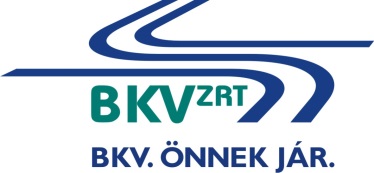Birthday underground: two years since the completion of the reconstruction of metro line M3
Budapest, 22 May 2025. – This spring, we celebrate the rebirth of the capital's busiest transport line: it's been two years since metro line M3 was reopened. Thanks to the reconstruction of the infrastructure and the stations, Budapesters and visitors to the capital had almost a new metro line back in the spring of 2023.
Two years ago, in May 2023, the complete reconstruction of metro M3 line was completed. The reconstruction of the north-south metro line between Kőbánya-Kispest and Újpest-központ took five and a half years, and was one of the most complex, if not the largest, Hungarian transport projects of recent years. As a result of the reconstruction, which lasted more than half a decade, the capital was given back a modern, accessible, safe and aesthetically renewed metro line. During the reconstruction, stations were rebuilt and made accessible, tracks were replaced and tunnels were insulated.
Hundreds of thousands of passengers a day – one of the capital's main transport line
It's no exaggeration to say that without metro line M3, Budapest's transport would be impossible. Connecting South Pest with North Pest under the city centre, the line plays a key role in the daily operations of the capital. The metro line serves hubs such as Nyugati pályaudvar, Deák Ferenc tér and Kálvin tér, among others. Tens of thousands of people pass through these stations every day.
The first section of the metro was opened in 1976, and the last, northern section was completed by 1990. The north-south metro line is the busiest in the capital, with trains departing every 2-5 minutes during weekday rush hours.
The six-carriage trains, known as ‘panda’ by workers because of their white and black colour, cover the more than 16-kilometre distance between Kőbánya-Kispest and Újpest-központ in just over half an hour. As well as being a fast and reliable means of transport, the metro also benefits the city's liveability, as the fast underground rail link will significantly reduce surface car traffic and thus reduce noise and air pollution in the capital.
The reconstruction of the metro has become an urgent priority for 2017. Before the work started, metro services had to be suspended on several occasions for technical reasons, and the condition of the tracks and tunnel, among other things, thus making it necessary to introduce speed restrictions on the line.
The importance of the metro line in the capital's transport system is demonstrated by the fact that the metro replacement buses covered 23 million kilometres during the five-and-a-half year reconstruction, and during the works of the downtown section, there were 110 vehicles on the road at any one time during peak periods. For more information on the challenges of the metro replacement, see the BKK website (in Hungarian).
More than a means of transport – modern spaces under Budapest
The reconstructed stations of the metro have been given a clean, distinctive design that offers functionality as well as aesthetic appeal. The modern and contemporary cladding and the brighter spaces are also designed to provide a more pleasant environment for passengers. The refurbishment has included the installation of special inclined elevators, a rarity in the world, to provide accessible access to the underground stations.
The works has also received professional recognition: the Budapest Chamber of Architects commended the reconstruction of the central and southern stations of the metro line, and the Deák Ferenc tér station was a finalist in the New York-based Architizer A+Awards competition.
The renewed metro line M3 has brought a new colour to Budapest, not only from a technical and aesthetic point of view, but also from a cultural one. New artworks have been installed in several stations, but also enamel paintings, for example, which were already in place in the northern section. The reimagined stations were designed in different styles by different designers and engineers.
Not only during the reconstruction, but also afterwards, the renovated metro line M3 became the site of art projects, and the futuristic spaces inspired many. After the reopening of the metro two years ago, Star Wars stars, for example, chose the brand new metro, with Darth Vader and the stormtroopers appearing in the downtown stations for a photo shoot. Projects like these show that sophisticated urban spaces – even underground – can be inspiring, playful and community-building places.
Equal opportunities – full accessibility
In addition to the new look and interior of the stations and tunnels, the entire line has been made accessible during the reconstruction completed two years ago. This included the installation of conventional and inclined elevators, a guideway and a modern passenger information system to help wheelchair users, the elderly, people with trolleys and the visually impaired.
New perspectives: longer running time on the metro from June
The completion of the reconstruction two years ago does not mean that the services provided by the metro cannot be further improved. The capital's metro network, including of course the M3, is facing new challenges as experts adapt the transport system to changing travel patterns. From Sunday 1 June, trains will continue to run on the M2, M3 and M4 metro lines, with the last trains leaving the city centre at around midnight on weekdays and around 1 AM on weekends. More information about the development can be found on the BKK website.

Photo: BKK
Source (in Hungarian): https://bkk.hu/hirek/2025/05/szuletesnap-a-fold-alatt-ket-eve-fejezodott-be-az-m3-as-metro-felujitasa.14360/







